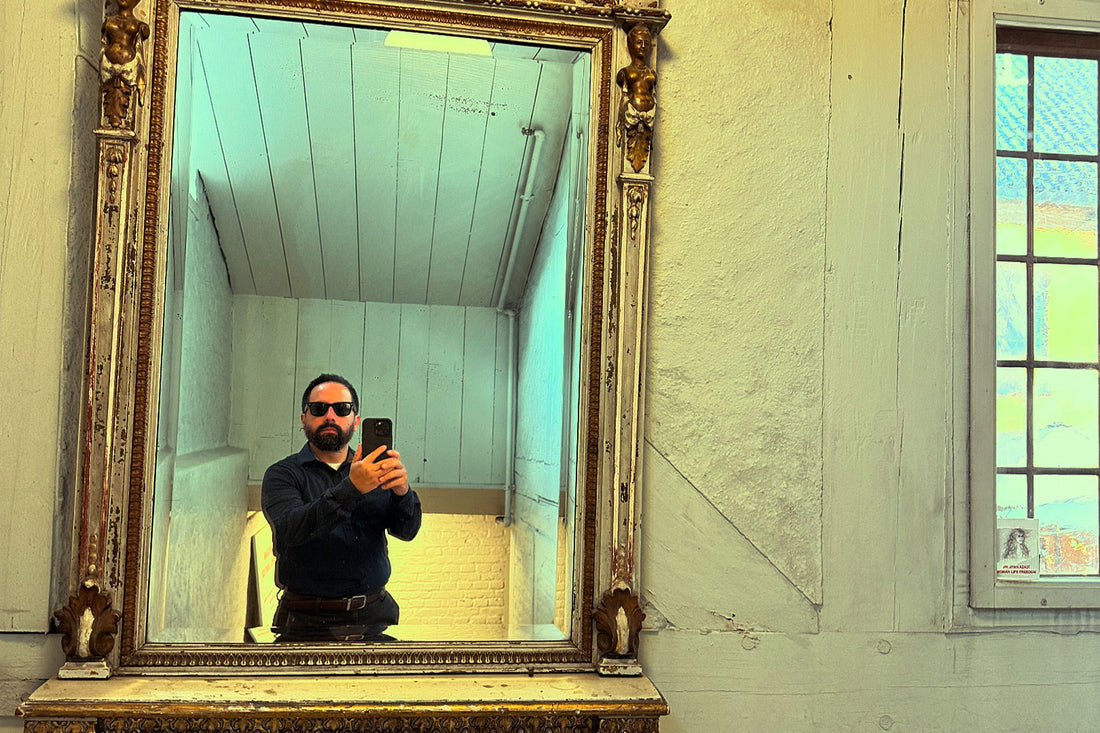An ongoing blog series offering insights into the international art market through my own eyes. The journey began in Japan, continued through Europe and Scandinavia, and concluded in New York. This recent exploration delved into art galleries, museums, artists' studios, and private art collections.
What started as a casual conversation in New York evolved into a journey spanning multiple countries, visits to an array of museums, art galleries, private collections, and artists' studios—not to mention a wide range of public and street art along the way. The global tour both began and ended in the presence of Rock J. Walker, a gentleman, art collector, and dealer, surrounded by some of the most influential art of the 20th century. The journey formed a large circle, beginning in Upper Manhattan and extending through Japan, Hungary, Austria, the Czech Republic, Germany, the Netherlands, Denmark, Sweden, Norway, and ultimately concluding back in New York. As Mr. Walker remarked before I embarked on the trip, 'All roads lead to Rome,' with New York being the Rome of the art world. In short, I found that to be very true. One thing I wasn’t aware of until I took the trip is that the road to Rome is a one-way street.
In a blog late last year titled Embracing the Evolving Art World: The S7CAG Experience, I mentioned not only the continued development of Sector Seven Contemporary Art Gallery (S7CAG) but also the positive impact Mr. Walker had on my career. In our seemingly New York-styled quick, dense, and impactful conversations, I discovered a new sense of what could be accomplished within the art world and gained clarity about my evolving role in it. This included insights into what to avoid, what to focus on and develop, and, after embarking on this journey, a better understanding of what areas to explore further.
Above all, I became equipped with a new perspective on the art world, thanks to Mr. Walker’s ability to condense his experiences into quick-witted conversations and detailed insights. He imparted valuable knowledge, from formulas for selecting artwork and simplifying communication with collectors to having the foresight to plan exhibitions that align with global economic and political environments. I also became more aware of the market’s pace and, for lack of a better description, the communal nature of the art market—something I had initially viewed as vast and mysterious.

Most importantly, he taught me how to transform my view of my role in the art market, evolving from curator to art collector and dealer—an investor of sorts—and how simple the art world can be when it comes to working with artists and collectors. I learned how to identify the right resources to collaborate with, and simplified my approach to initiating conversations with museums and art galleries, as well as the process of developing art exhibitions. There was also a down-to-earth, humanistic approach to working with collectors, artists, and galleries. Through our conversations, engaging with the art market became significantly simplified.
I’d have to say that planning such a trip takes a lot of time and requires a significant amount of internal will—to take the first step and continue the journey until the end. Entering countries where I know nothing about the language and culture can be intimidating at times. It involves a lot of alone time and overcoming my own doubts as well as external naysayers. At the very least, I thought, I’d give myself credit for my commitment to being involved in the art market and, even if just for myself, demonstrate my love and passion for the arts.

There were a variety of times when I’d hand my business card to an artist or gallery owner, and they’d ask, 'Who sent you?' My answer was simple: 'I sent me.' 'Who do you represent?' they’d ask. 'Who is your boss?' 'I represent my own online gallery; I represent me. I’m developing my own organization. I’m doing research about the art market,' I would tell them.
What left a major impression on me in my conversations with Mr Walker was one statement in particular: "All roads lead to Rome." In this scenario, Rome represents New York and its position as the capital of the global art market. With his insights on how to view what people are doing behind the scenes in the art world, I set out to travel on one of the roads to Rome and see for myself how the trail unfolded—starting in Japan, traveling through Europe and Scandinavia, and ending in New York, where I literally shook hands with Mr. Walker at the end of my journey and thanked him for all the insights he had shared.

Let me tell you, from what I can see, all roads do lead to Rome—New York, as I see it. The United States, specifically New York, has some of the most culturally influential, expensive, and highest-quality artwork in the world. Stepping off the plane at JFK International Airport and walking into the first handful of art galleries was like night and day compared to what I had seen in various art galleries and, yes, museums in other countries.
In the blogs to come, I’ll be sharing insights from my recent journey. My plan is to revisit hand-selected areas from the initial trip, develop relationships with artists I meet, establish a network with key organizations and galleries, and explore new countries to continue investigating the art market in key art capitals. My long-term vision includes finding a location to potentially open an art gallery and places to live, whether full-time or seasonally.
I thank you for joining me on these journeys. Writing these blogs helps me solidify what I’ve learned, define my future goals and direction, and provide an outlet to share important highlights along the journey in the art world. I hope you find value in reading these blogs. Stay connected as the series rolls out under the title "The Road to Rome."




